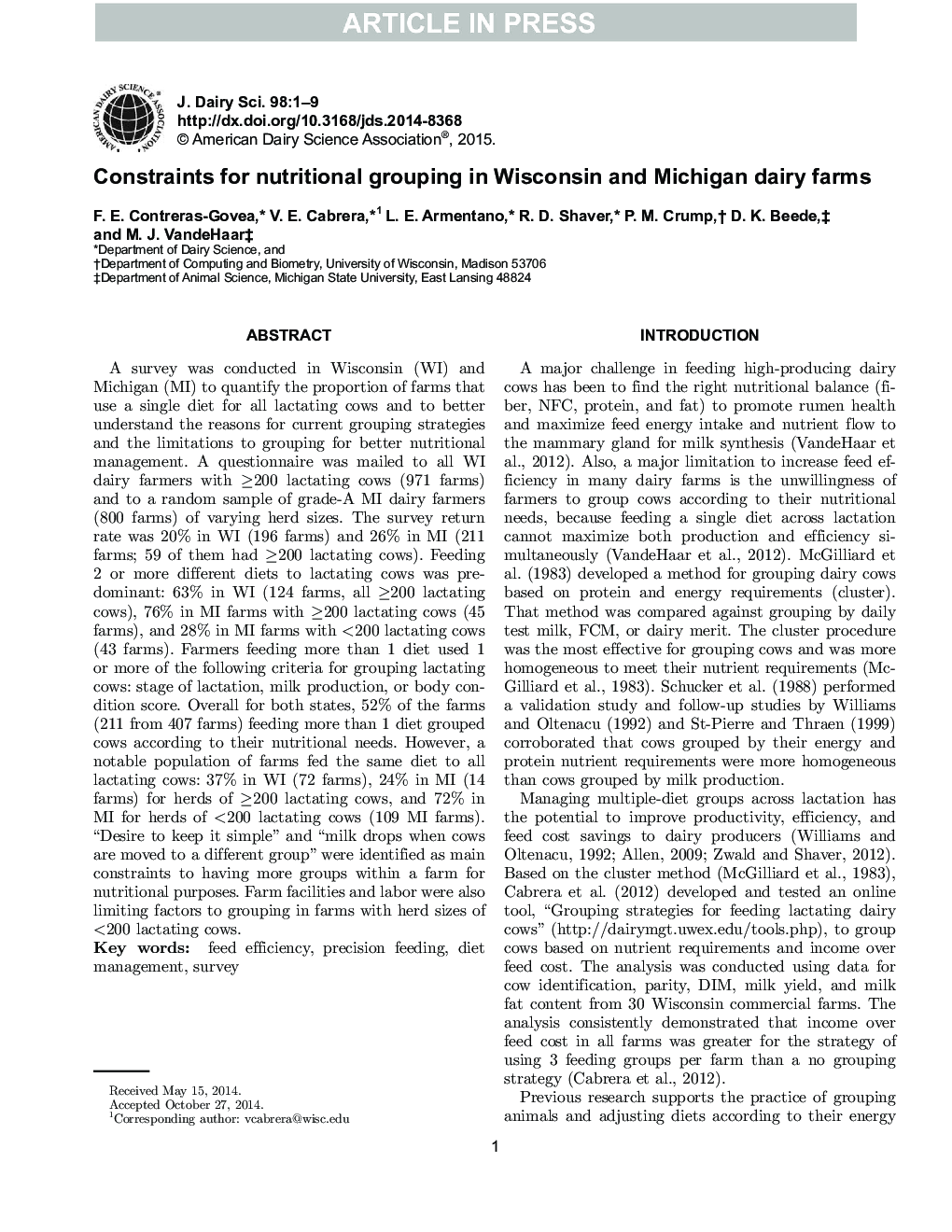| Article ID | Journal | Published Year | Pages | File Type |
|---|---|---|---|---|
| 10975468 | Journal of Dairy Science | 2015 | 9 Pages |
Abstract
A survey was conducted in Wisconsin (WI) and Michigan (MI) to quantify the proportion of farms that use a single diet for all lactating cows and to better understand the reasons for current grouping strategies and the limitations to grouping for better nutritional management. A questionnaire was mailed to all WI dairy farmers with â¥200 lactating cows (971 farms) and to a random sample of grade-A MI dairy farmers (800 farms) of varying herd sizes. The survey return rate was 20% in WI (196 farms) and 26% in MI (211 farms; 59 of them had â¥200 lactating cows). Feeding 2 or more different diets to lactating cows was predominant: 63% in WI (124 farms, all â¥200 lactating cows), 76% in MI farms with â¥200 lactating cows (45 farms), and 28% in MI farms with <200 lactating cows (43 farms). Farmers feeding more than 1 diet used 1 or more of the following criteria for grouping lactating cows: stage of lactation, milk production, or body condition score. Overall for both states, 52% of the farms (211 from 407 farms) feeding more than 1 diet grouped cows according to their nutritional needs. However, a notable population of farms fed the same diet to all lactating cows: 37% in WI (72 farms), 24% in MI (14 farms) for herds of â¥200 lactating cows, and 72% in MI for herds of <200 lactating cows (109 MI farms). “Desire to keep it simple” and “milk drops when cows are moved to a different group” were identified as main constraints to having more groups within a farm for nutritional purposes. Farm facilities and labor were also limiting factors to grouping in farms with herd sizes of <200 lactating cows.
Related Topics
Life Sciences
Agricultural and Biological Sciences
Animal Science and Zoology
Authors
F.E. Contreras-Govea, V.E. Cabrera, L.E. Armentano, R.D. Shaver, P.M. Crump, D.K. Beede, M.J. VandeHaar,
